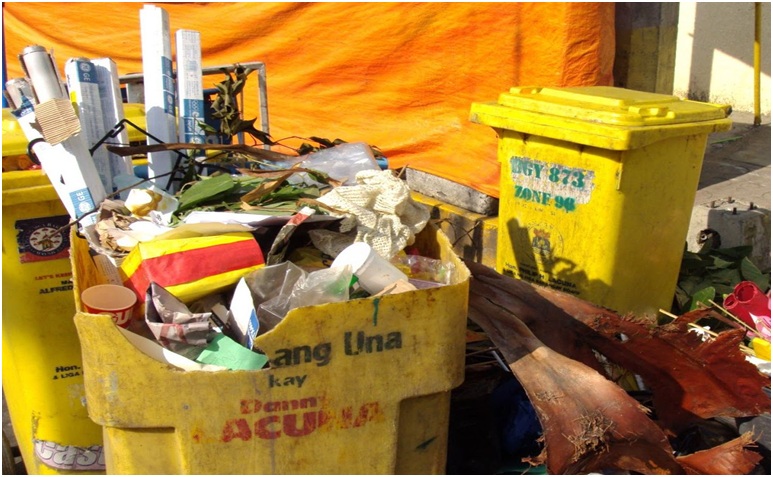Table of Contents
Hazardous waste encompasses a wide range of materials that can pose substantial or potential threats to public health or the environment. These include chemicals, solvents, batteries, and electronic waste. It is crucial to understand the different types of hazardous waste your facility generates to ensure proper disposal methods are followed. Mismanagement of hazardous waste can lead to severe consequences, including health risks, environmental damage, and legal penalties. Familiarize yourself with the characteristics of hazardous waste and use skip hire Stockport and avoid things such as ignitability, corrosivity, reactivity, and toxicity—to handle them safely and effectively.
1. Personal Protective Equipment (PPE)
Personal Protective Equipment (PPE) is vital for anyone handling hazardous waste. PPE includes items like gloves, masks, goggles, and protective suits that shield workers from direct contact with hazardous substances. The type of PPE required depends on the nature of the waste being handled. For example, handling chemical waste might require chemical-resistant gloves and face shields, whereas dealing with biological waste might necessitate full-body suits and respirators. Ensuring that all personnel are equipped with and trained in the proper use of PPE minimizes the risk of exposure and enhances overall safety.
2. Proper Labeling and Identification
Accurate labeling and identification of hazardous waste are fundamental to safe disposal practices. Containers holding hazardous waste should be clearly labeled with the contents, hazard symbols, and any relevant handling instructions. This prevents accidental mishandling and ensures that everyone involved in the disposal process is aware of the potential risks. Labels should be durable and resistant to the waste they describe, and regular inspections should be conducted to ensure labels remain legible. Proper labeling also aids in compliance with regulatory requirements and facilitates effective emergency response if needed.
3. Segregation of Hazardous Waste
Segregating hazardous waste is essential to prevent dangerous reactions that can occur when incompatible substances mix. Different types of hazardous waste should be stored separately based on their chemical and physical properties. For example, acids and bases should be kept apart to avoid violent reactions, and flammable materials should be stored away from sources of ignition. Segregation also simplifies the disposal process, as different types of waste often require different treatment methods. Proper segregation reduces the risk of accidents and makes the handling, transportation, and disposal of hazardous waste more efficient and safe.
4. Training and Education
Proper training and education for all personnel involved in the handling and disposal of hazardous waste are critical for maintaining safety standards. Employees should be trained on the identification, classification, and risks associated with hazardous waste. Training programs should cover proper handling procedures, emergency response protocols, and the use of personal protective equipment (PPE). Regular refresher courses are essential to keep staff updated on the latest safety practices and regulatory changes. By ensuring that all workers are knowledgeable and prepared, organizations can significantly reduce the risk of accidents and ensure a safer working environment.
5. Emergency Preparedness
Emergency preparedness is a vital component of hazardous waste management. Accidents can happen despite all precautions, and having a robust emergency plan in place is crucial. This plan should include procedures for dealing with spills, leaks, fires, and exposures. It should detail the roles and responsibilities of personnel during an emergency, communication protocols, and evacuation routes. Emergency response equipment, such as spill kits, fire extinguishers, and first aid supplies, should be readily accessible and regularly maintained. Conducting regular drills and training sessions helps ensure that everyone knows how to respond quickly and effectively in the event of an emergency.
6. Safe Storage Practices
Safe storage practices are essential to prevent the release of hazardous waste into the environment and ensure the safety of personnel. Hazardous waste should be stored in appropriate, clearly labeled containers that are compatible with the waste type. Storage areas should be secure, well-ventilated, and designed to contain spills. Incompatible wastes should be stored separately to prevent dangerous reactions. Regular inspections should be conducted to check for leaks, deterioration of containers, and proper labeling. Implementing stringent storage protocols minimizes the risk of accidents and environmental contamination.
Also Read: How to Deep-Clean Every Room in Your House?
Summary:
Compliance with local, state, and federal regulations is a fundamental aspect of hazardous waste management. Regulations govern the generation, transportation, treatment, storage, and disposal of hazardous waste, ensuring that it is managed in a way that protects human health and the environment. Organizations must stay informed about relevant laws and ensure that all practices meet regulatory standards. This includes obtaining necessary permits, maintaining proper documentation, and reporting any incidents as required. Failure to comply with regulations can result in severe penalties, legal action, and damage to the organization’s reputation. Adhering to legal requirements not only ensures safe practices but also demonstrates a commitment to environmental stewardship and public safety.





